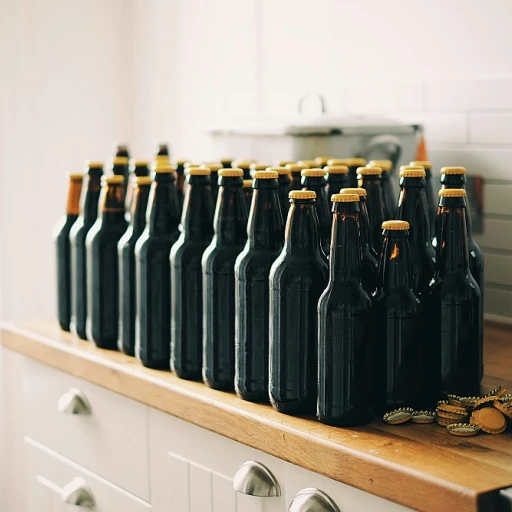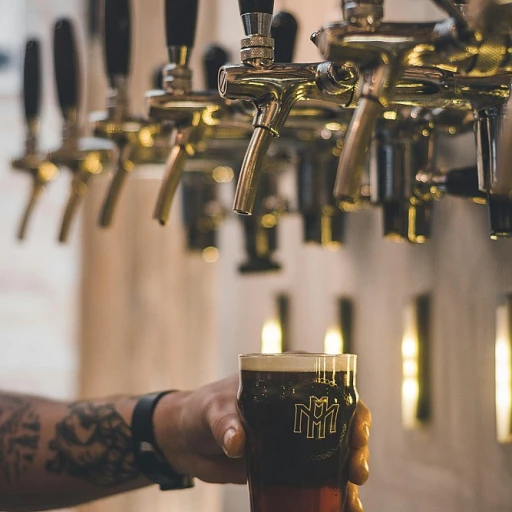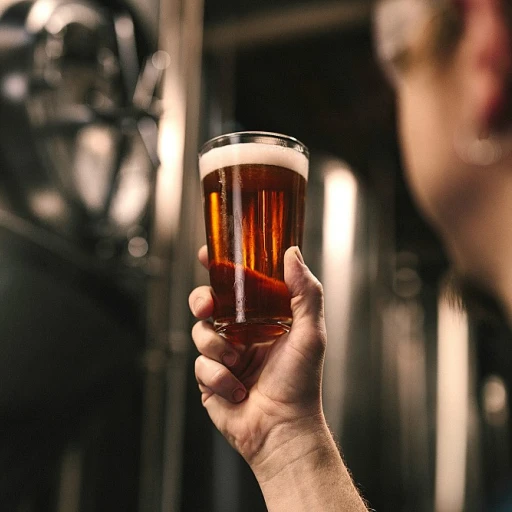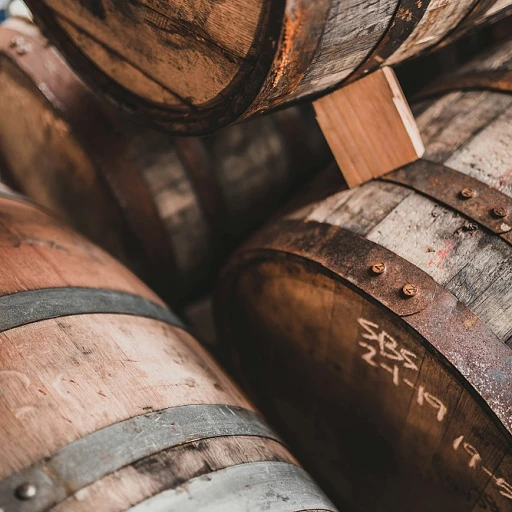
The Allure of Dark Beer
The Unmistakable Appeal of Dark Beer
Dark beer holds a special place in the hearts, and glasses, of beer enthusiasts worldwide. Its rich, robust flavors and intriguing aromas invite curiosity and exploration, making it a favorite among those who appreciate more than just a casual pint. Dark beers, with their varying shades from deep browns to nearly black, are often perceived as a more complex offering from the brewing world. The allure of these beers begins with their eye-catching appearance. The deep hues result from longer roasting times of the malt used, a process which imbues the beer with distinct characteristics. This brewing technique not only affects color but dramatically influences flavor profiles as well. From hints of chocolate to rich coffee notes, the world of dark beer serves up a sensory experience that goes beyond the visual. But what truly sets dark beers apart is their ability to embrace a spectrum of flavors, catering to both casual drinkers and connoisseurs alike. They harmoniously blend boldness and subtlety, creating a versatile beverage that can complement a variety of dishes or stand alone in its complexity. Whether enjoying a stout or a porter, the layers of flavor reveal themselves with every sip. Those eager to enter the realm of dark beers will find that it opens a window to a wide world of taste adventures. For instance, exploring the flavors of an Irish pub stout offers a cozy charm, while a traditional brown ale presents a classic reprieve from the ordinary. Such diverse offerings are testament to the skill and creativity involved in brewing these beloved beer styles. Check out this Irish pub experience for more insights into the rich flavors of dark beer.Stout: The Bold and the Beautiful
Stout: A Dark Beer that Impresses
Stout is often celebrated in the beer world for its rich, full-bodied character and intense flavors, making it a go-to choice for those looking to delve deeper into the allure of dark beer's legacy. Originating from its humble beginnings as a stronger variation of porter, stout has evolved into a multifaceted style that excites both novice and seasoned beer enthusiasts.
With brewing roots traced back to the British Isles, stout's compelling nature lies in its roasted malt profile. This roasted malt, used in higher quantities than in other beers, imparts those characteristic notes of coffee, chocolate, and sometimes even licorice, often accompanied by a pleasant, slightly bitter finish. These robust flavors create a symphony of taste, especially in iconic variations like the dry stouts, which offer a creamy texture and subtle bitterness, thanks to the use of roasted barley.
There are many types of stouts to explore, each with its own twist on the traditional stout profile:
- Dry Stout: Known for a sharper, roasted bitterness, with the iconic Guinness being a well-loved example.
- Sweet Stout: Sometimes referred to as "milk stout" due to the addition of lactose, this style balances the roasted malt with a creamier, sweeter finish.
- Oatmeal Stout: This variation incorporates oats into the mash, resulting in a smooth, full-bodied beer with a hint of nuttiness.
- Imperial Stout: For those who love boldness, this stout packs a powerful punch with higher alcohol content and intense flavors of dark fruit, espresso, and cocoa.
The diversity within the stout category signifies the broad appeal and enduring charm that has captivated beer drinkers for generations. It also nods to the brewing techniques and flavor profiles discussed in other sections of the article, showing how different methods produce unique interpretations even within a single style of dark beer.
Porter: The Smooth Operator
The Essence of Porter
Porter is a fascinating member of the dark beer family, known for its smooth and inviting palate. This style of beer originated in London and quickly gained popularity due to its rich taste and relatively low alcohol content. Unlike its stout counterpart, porters often boast a unique blend of flavors—ranging from hints of chocolate to subtle notes of caramel and coffee. These complex flavors make it an excellent choice for those who appreciate a layered drinking experience.
One of the reasons for porter's enticing profile lies in its brewing technique. Breweries often use a mix of pale malts with dark roasted malt, which adds depth and character without overwhelming the drinker. The appeal of the dark beer is evident in the warm embrace of porter's full-bodied yet smooth texture.
Whether enjoyed on its own or paired with hearty dishes, porter provides the perfect balance between bold flavor and easy drinkability. If you're keen on exploring more on beer choices and experiences, check out our insightful piece on beer keg experiences, which offers further insights into the world of beer.
Brown Ale: The Versatile Classic
The Versatility that Lies Within
The brown ale is truly a versatile gem in the world of dark beers. Unlike its bolder cousins, the stout and porter, brown ale offers a range of flavors that are more subtle yet equally satisfying. With its roots deeply embedded in English brewing history, this style has captured the hearts of beer enthusiasts worldwide.
Brown ale falls somewhere between the darkness of stouts and the lighter-bodied ales. Its deep brown color, often with ruby highlights, hints at the rich, malty delights within. The roasted maltiness provides a nutty, toasty essence, which can be complemented by varying degrees of sweetness, fruitiness, and even chocolate notes.
The Adaptability Across Occasions
What makes brown ale truly remarkable is its versatility in pairing with foods and its ability to satisfy in almost any setting. Whether you're enjoying a casual meal, attending a festive gathering, or unwinding after a long day, a brown ale can be the perfect companion.
The moderate alcohol content and balanced flavor profile of brown ales make them suitable for a variety of occasions. They are an excellent match with a wide range of dishes, from grilled meats to spicy curries, enhancing the dining experience without overpowering the palate.
If you're interested in the craft of brewing and wish to explore more about how flavors are crafted, consider looking into the different aspects of tap handle design as they can play a significant role in how a beer is dispensed and enjoyed.
Brewing Techniques and Flavor Profiles
Brewing Techniques and Flavor Influences
Understanding the nuances that go into crafting the perfect dark beer can deepen your appreciation for this beer category. It's not just about ingredients and recipe, but also about the artistry and science behind each brew.- Malt Choices: The foundation of dark beer's character often lies in the malt. Brewers select and roast different malt varieties to achieve flavors ranging from chocolate and coffee to caramel and toffee. The type of malt used greatly influences the sweetness, body, and color of the beer.
- Fermentation: The fermentation process can enhance or alter the flavors imparted by the malt. Different yeast strains can produce varying levels of esters and phenols, contributing to the beer's aroma and taste profile.
- Barrel Aging: Some dark beers, like specific stouts and porters, are aged in barrels that previously held spirits, such as whiskey or rum. This technique infuses additional layers of flavor complexity, offering notes of oak, vanilla, or even spices.
- Blending Techniques: For unique flavor profiles, brewers might blend different beer batches to achieve balance and depth. This can result in a smoother operator, just like the rich and intricate notes found in classic porters.
- Temperature Control: The rate of fermentation and final taste can be affected by how well temperature is controlled during brewing. Some dark ales showcase more subtle flavors when brewed at specific temperatures.













